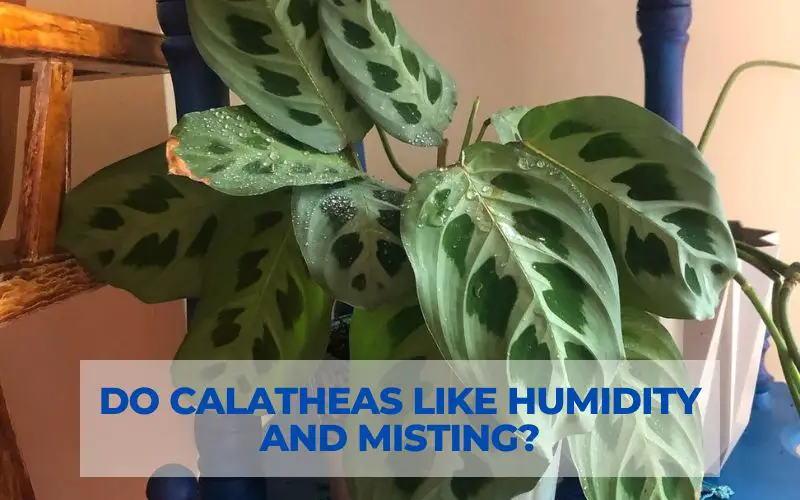This is a question that has long been debated among plant lovers. On the one hand, Calatheas are native to tropical regions, where humidity levels are typically high. On the other hand, some Calatheas have been known to thrive in dry conditions. So, what does the science say?
Do Calatheas Like Humidity?
Calatheas are tropical plants, so they do like humidity. However, they will also tolerate dry air for short periods of time. If the air is too dry, the leaves will start to curl and turn brown. The best way to increase the humidity around your Calathea is to use a humidifier or place the pot on a pebble tray.
How much humidity does a Calathea need?
Ideally, you should aim for 50-60% humidity. However, the plant will still do fine at 40-50%. If the air is too dry, you can increase the humidity by placing the pot on a pebble tray or using a humidifier.
Pebble trays are an easy way to increase the humidity around your plant. Simply fill a tray with pebbles and water. Place the pot on top of the pebbles, making sure that the pot is not touching the water. The evaporation from the water will increase the humidity around the plant.
Humidifiers are another easy way to increase humidity. Many different types of humidifiers are available, so choose one that is right for your home. Be sure to clean the humidifier regularly to prevent the growth of mold and bacteria.
What if the air is too humid?
If the air is too humid, the leaves will start to yellow and drop off. The best way to reduce the humidity is to use a dehumidifier or open a window.
Dehumidifiers are the best way to reduce the humidity in your home. They work by removing moisture from the air, which will help to keep your Calathea healthy. Be sure to empty the water tray regularly, and clean the filter according to the manufacturer’s instructions.
Opening a window will also help to reduce the humidity in your home. This is especially effective if you live in a humid climate. Just be sure to close the window when the humidity has lowered to prevent drafts from affecting your plant.
Calatheas are tropical plants that enjoy high humidity levels. However, they will tolerate dry air for short periods of time. The best way to increase the humidity around your Calathea is to use a humidifier or place the pot on a pebble tray. Aim for 50-60% humidity, and open a window if the air is too humid.
Related post: Calathea light requirements: How much light do they need?
How do you increase humidity for Calathea?
Calathea like to be misted, but they should not be kept too wet. The leaves of the Calathea are covered in tiny hairs that help to absorb moisture from the air. If the leaves are kept too wet, they can develop fungal growths or become damaged. Misting should be done in the morning so that the leaves have time to dry before nightfall.
The best way to water a Calathea is to use distilled water or rainwater, as tap water can contain chemicals that can harm the plant. When watering from below, allow the water to drain completely before putting the plant back in its pot. Overwatering is one of the most common problems with Calathea, so it is important to be careful not to give them too much water.
In fact, they need it to thrive. If the air is too humid, you can reduce it by opening windows or using a dehumidifier. You can also increase the humidity of your Calathea by misting it with water or placing it in a tray of wet pebbles. Thanks for following along on our journey to discover the ideal humidity level for Calatheas. Have you had success keeping yours happy and healthy in your home? Let us know in the comments below.


